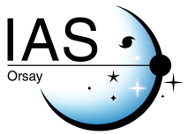INFRARED LUMINOSITIES AND AROMATIC FEATURES IN THE 24 mu m FLUX-LIMITED SAMPLE OF 5MUSES
| Titre | INFRARED LUMINOSITIES AND AROMATIC FEATURES IN THE 24 mu m FLUX-LIMITED SAMPLE OF 5MUSES |
| Type de publication | Journal Article |
| Year of Publication | 2010 |
| Auteurs | Wu, YL, Helou, G, Armus, L, Cormier, D, Shi, Y, Dale, D, Dasyra, K, Smith, JD, Papovich, C, Draine, B, Rahman, N, Stierwalt, S, Fadda, D, Lagache, G, Wright, EL |
| Journal | Astrophysical Journal |
| Volume | 723 |
| Pagination | 895-914 |
| Date Published | Nov |
| ISBN Number | 0004-637X |
| Numéro d'accès | WOS:000284090100076 |
| Résumé | We study a 24 mu m selected sample of 330 galaxies observed with the infrared spectrograph for the 5 mJy Unbiased Spitzer Extragalactic Survey. We estimate accurate total infrared luminosities by combining mid-IR spectroscopy and mid-to-far infrared photometry, and by utilizing new empirical spectral templates from Spitzer data. The infrared luminosities of this sample range mostly from 10(9) L(circle dot) to 10(13.5) L(circle dot), with 83% in the range 10(10) L(circle dot) < L(IR) < 10(12) L(circle dot). The redshifts range from 0.008 to 4.27, with a median of 0.144. The equivalent widths of the 6.2 mu m aromatic feature have a bimodal distribution, probably related to selection effects. We use the 6.2 mu m polycyclic aromatic hydrocarbon equivalent width (PAH EW) to classify our objects as starburst (SB)-dominated (44%), SB-AGN composite (22%), and active galactic nucleus (AGN)-dominated (34%). The high EW objects (SB-dominated) tend to have steeper mid-IR to far-IR spectral slopes and lower L(IR) and redshifts. The low EW objects (AGN-dominated) tend to have less steep spectral slopes and higher L(IR) and redshifts. This dichotomy leads to a gross correlation between EW and slope, which does not hold within either group. AGN-dominated sources tend to have lower log(L(PAH7.7) (mu m)/ L(PAH11.3) (mu m)) ratios than star-forming galaxies, possibly due to preferential destruction of the smaller aromatics by the AGN. The log(L(PAH7.7) (mu m)/ L(PAH11.3) (mu m)) ratios for star-forming galaxies are lower in our sample than the ratios measured from the nuclear spectra of nearby normal galaxies, most probably indicating a difference in the ionization state or grain size distribution between the nuclear regions and the entire galaxy. Finally, we provide a calibration relating the monochromatic continuum or aromatic feature luminosity to L(IR) for different types of objects. |



